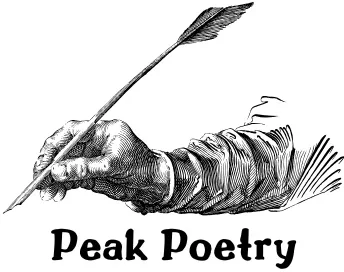Sad Poetry in English: Understanding Emotions Through Words
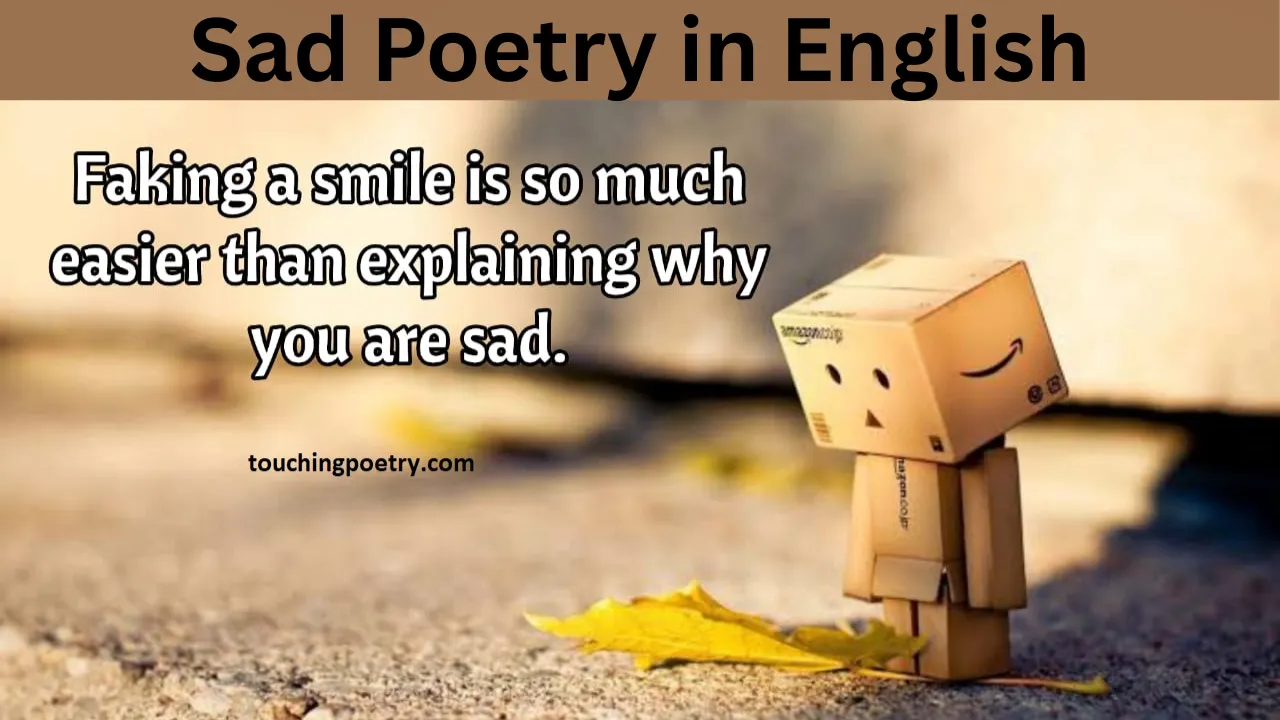
Sad poetry in English has been a powerful way for individuals to express their feelings of sorrow, grief, and pain. It’s a medium through which people channel their emotions, often offering a sense of relief for the writer and a cathartic experience for the reader. This type of poetry is full of raw emotion and vivid imagery, allowing the reader to connect with the poet’s inner turmoil.
Read more: peakpoetry.com
What Is Sad Poetry in English?
Sad poetry in English revolves around the expression of emotions that reflect sadness, loneliness, and the difficulties of life. Whether through a personal loss, heartbreak, or the feeling of being misunderstood, sad poetry captures the essence of human sorrow. It is written in such a way that it resonates with readers, often helping them cope with their own feelings. By using simple yet powerful language, poets are able to make their words meaningful, often conveying a sense of shared experience between themselves and their audience.
Read more: Birthday Poetry in Urdu: A Beautiful Way to Celebrate
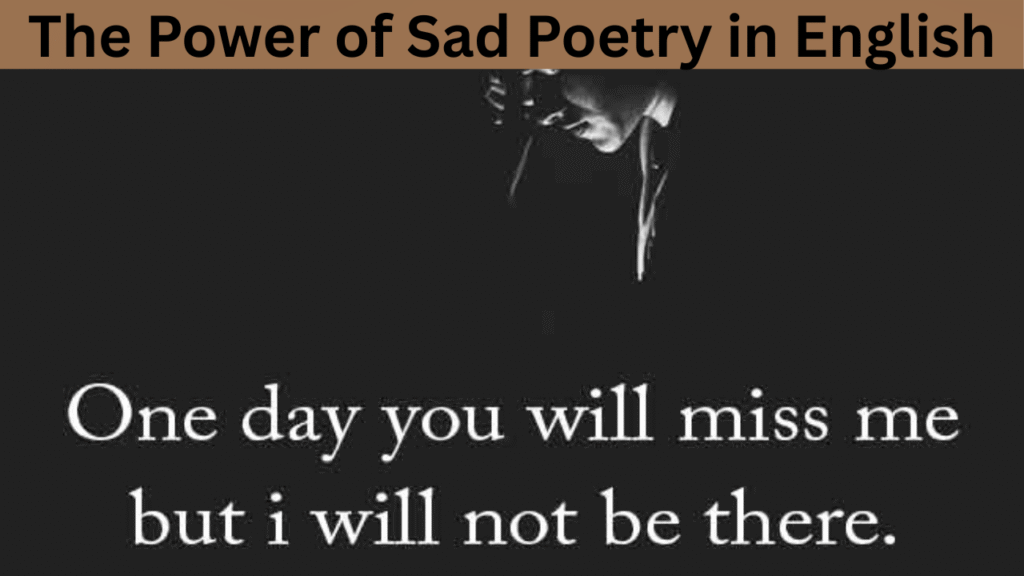
The Power of Sad Poetry in English
Sad poetry in English plays an important role in literature and society. It gives voice to feelings that many people struggle to express. It’s not just about the sadness itself but also about the healing process. Writing or reading sad poetry can act as a form of therapy. It allows individuals to process emotions and find comfort in knowing they are not alone in their experiences.
Many people turn to poetry in times of grief, loss, or emotional turmoil, seeking solace and understanding. The rhythmic flow of words in sad poetry can also serve as a release for pent-up emotions, enabling the poet or reader to confront their sadness in a healthy manner.
“The Raven” by Edgar Allan Poe
Once upon a midnight dreary, while I pondered, weak and weary,
Over many a quaint and curious volume of forgotten lore—
While I nodded, nearly napping, suddenly there came a tapping,
As of someone gently rapping, rapping at my chamber door.
“’Tis some visitor,” I muttered, “tapping at my chamber door—
Only this and nothing more.”
“A Valediction: Forbidding Mourning” by John Donne
If they be two, they are two so
As stiff twin compasses are two,
Thy soul, the fixed foot, makes no show
To move, but doth, if the other do.
And though it in the centre sit,
Yet when the other far doth roam,
It leans and hearkens after it,
And grows erect, as that comes home.
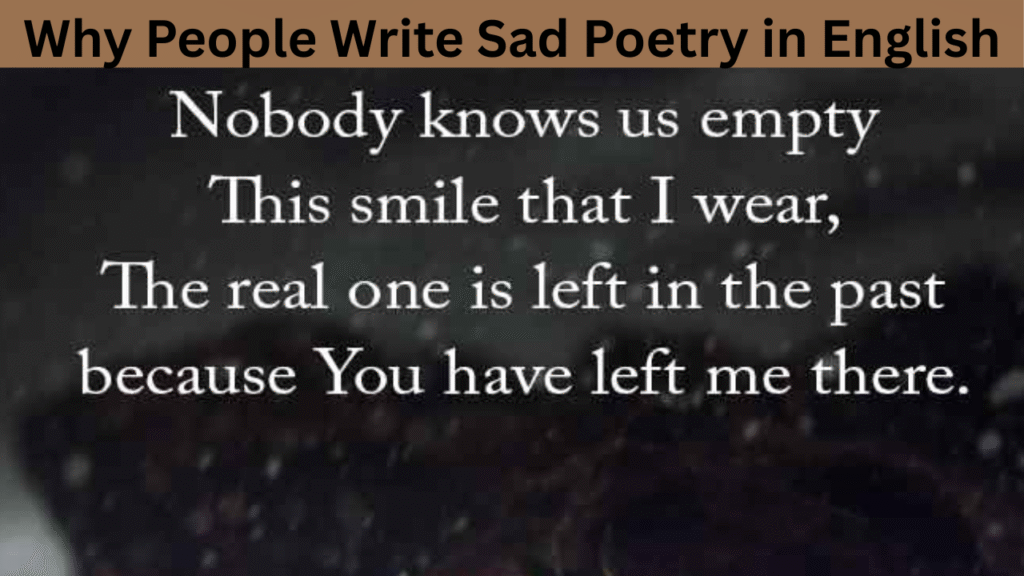
Why People Write Sad Poetry in English
People write sad poetry in English for various reasons. Some do it as a form of personal therapy, while others write to express feelings that cannot be shared in everyday conversation. For many, poetry provides an outlet for emotions that are difficult to verbalize. The creative process allows the writer to articulate feelings of sadness, whether it’s grief from a loss, heartbreak from a relationship, or the melancholy that arises from personal struggles.
Writing sad poetry also allows for reflection. Poets use their words to understand their feelings better. The act of writing can help them gain clarity and, over time, offer a sense of peace.
“I Cannot Live With You” by Emily Dickinson
I cannot live with You—
It would be Life—
And Life is over there—
Behind the Shelf.
“The Road Not Taken” by Robert Frost
Two roads diverged in a yellow wood,
And sorry I could not travel both
And be one traveler, long I stood
And looked down one as far as I could
To where it bent in the undergrowth.
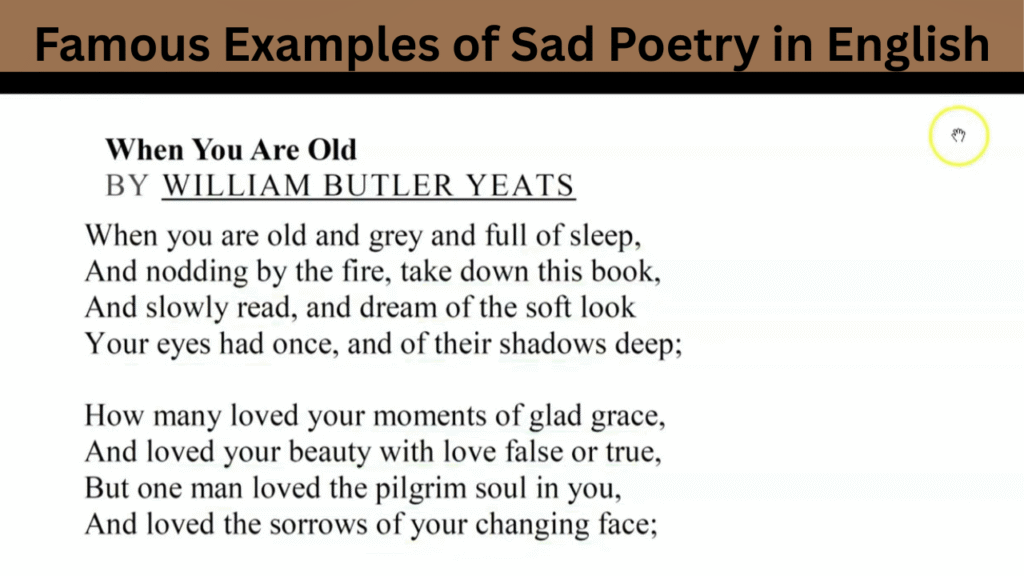
Famous Examples of Sad Poetry in English
To understand the impact of sad poetry in English, let’s look at some famous examples that have left a lasting impression.
“When You Are Old” by W.B. Yeats
When you are old and grey and full of sleep,
And nodding by the fire, take down this book,
And slowly read, and dream of the soft look
Your eyes had once, and of their shadows deep.
This poem by W.B. Yeats reflects on the themes of love and loss, showing the poet’s longing for a time that has passed. It evokes a deep sense of sadness as Yeats reflects on aging and the fading of memories.
“A Dream Within A Dream” by Edgar Allan Poe
All that we see or seem
Is but a dream within a dream.
Edgar Allan Poe’s famous lines capture the essence of fleeting moments and the sadness that comes with the realization that life’s joys may be as transient as a dream. This poem resonates with anyone who has felt the pain of impermanence.
“The Soldier” by Rupert Brooke
If I should die, think only this of me:
That there’s some corner of a foreign field
That is for ever England.
There shall be in that rich earth a richer dust concealed;
A dust whom England bore, shaped, made aware,
Gave, once, her flowers to love, her ways to roam,
A body of England’s, breathing English air,
Washed by the rivers, blest by suns of home.
Themes Commonly Found in Sad Poetry in English
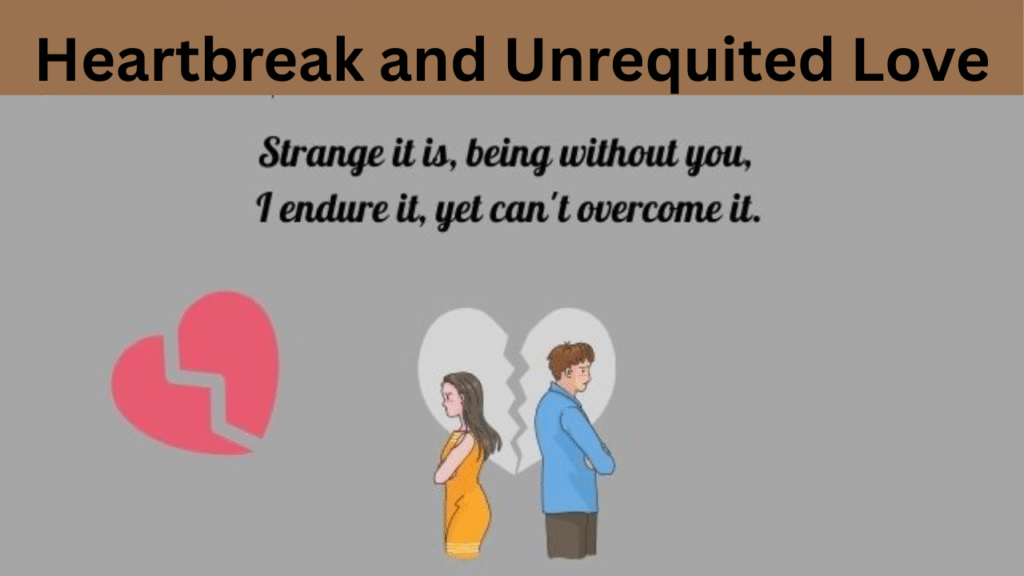
Heartbreak and Unrequited Love
One of the most common themes in sad poetry in English is the pain of unrequited love or a broken relationship. Poets often write about the ache of loving someone who doesn’t feel the same or the devastating aftermath of a relationship that has ended. This type of poetry expresses the feeling of emotional loss and longing for what once was. Example:
“I loved you once, but now you’re gone,
And all that remains is this broken song.”
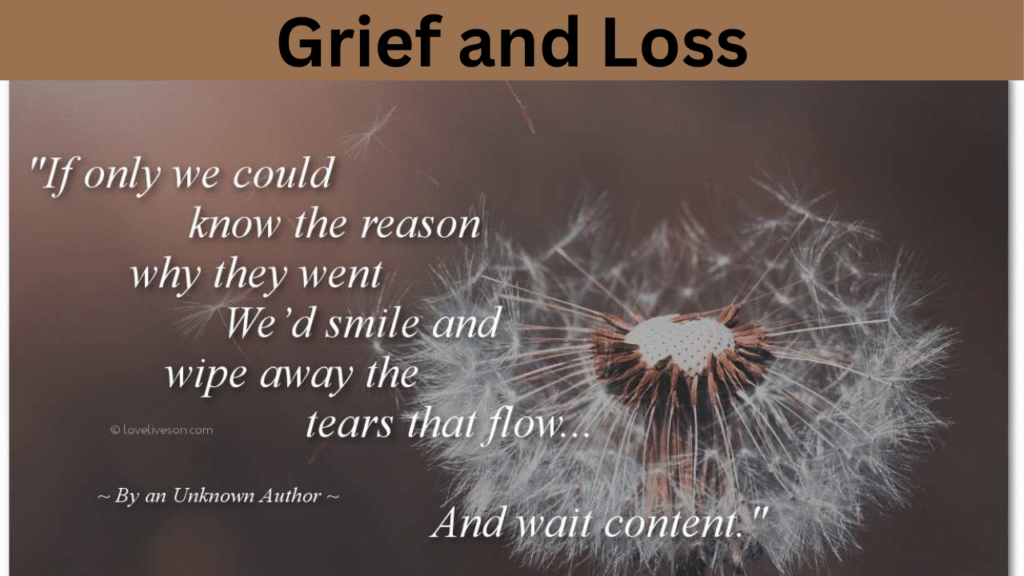
Grief and Loss
Another central theme in sad poetry is the deep sorrow that comes from losing a loved one. Whether through death, separation, or estrangement, grief is a universal experience that poets have sought to capture. These poems often evoke intense emotions and reflect on the inevitability of death and the fragility of life. Example:
“Gone are the days when we used to smile,
Now I walk alone for many a mile.”
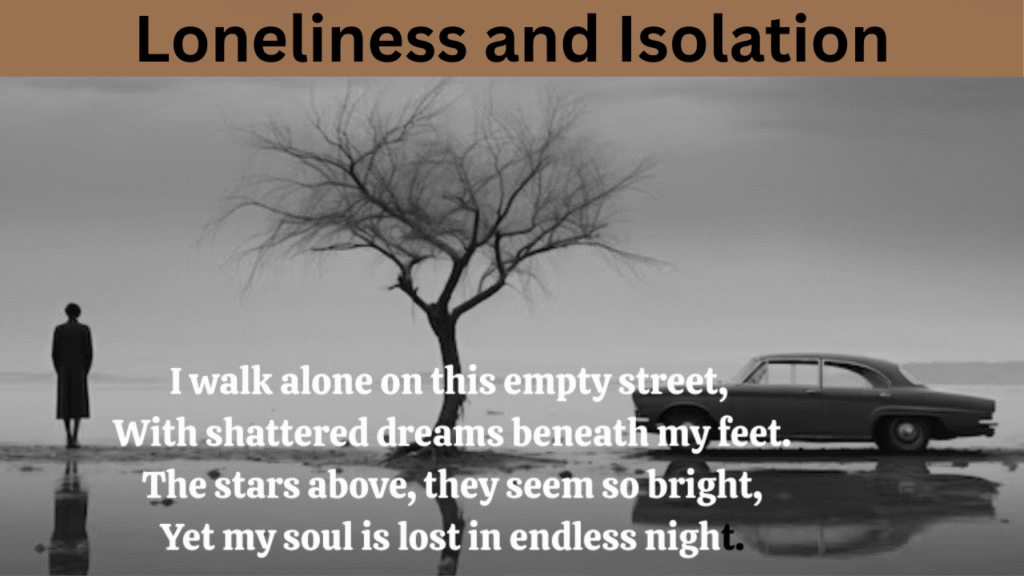
Loneliness and Isolation
Sad poetry also explores the experience of being alone, whether physically or emotionally. Poets reflect on the sense of emptiness that can pervade one’s life and the feeling of being disconnected from others. This loneliness can be both self-imposed and a result of external circumstances, like societal pressures or strained relationships. Example:
“I sit in silence, with no one near,
My heart is empty, and so is my fear.”
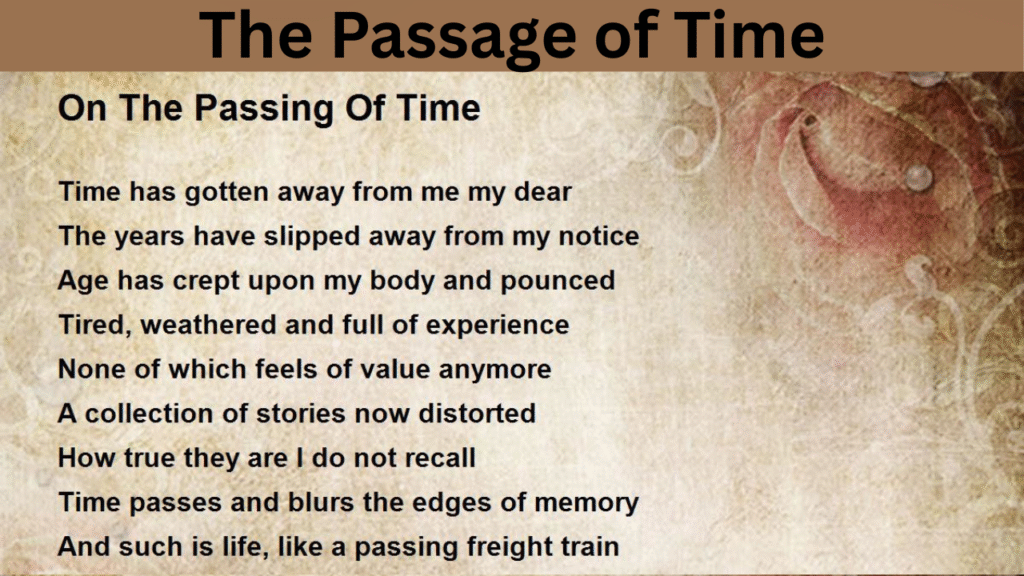
The Passage of Time
Time, as a constant and sometimes painful force, is another key theme in sad poetry. Poets often lament the passing of time, the loss of youth, or the fading of memories. These poems highlight the sadness that arises from recognizing that nothing lasts forever. Example:
“The years go by, and I am left behind,
Time slips away, and peace I cannot find.”
Conclusion
Sad poetry in English holds a unique place in literature and in the hearts of many readers. It is more than just a way to express sorrow—it is a form of art that reflects the complexities of human emotion. Through its poignant imagery and honest portrayal of sadness, it offers both healing and connection.
Whether you are reading or writing sad poetry, you are engaging with something timeless. It speaks to the heart and soul, creating a space where emotions can be shared, understood, and processed. As we continue to face personal and collective challenges, sad poetry in English will remain an essential tool for emotional exploration and healing.
